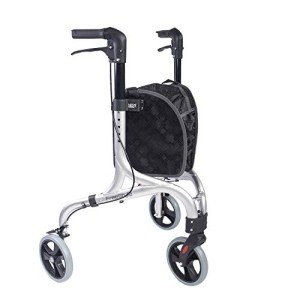outdoor-walker0777
outdoor-walker0777
The 10 Scariest Things About Medical Walker
Understanding Medical Walkers: A Comprehensive Guide
Medical walkers act as invaluable mobility aids for people recovering from surgical treatment, handling chronic health problems, or handling age-related mobility issues. These gadgets not only boost physical self-reliance but also improve safety, enabling users to navigate their environments with greater ease. This article explores the types, benefits, features, and considerations associated with medical walkers, in addition to some often asked questions.

Table of Contents
- Types of Medical Walkers
- Benefits of Using a Medical Walker
- Key Features to Consider
- Regularly Asked Questions
- Conclusion
1. Types of Medical Walkers
Medical walkers are available in numerous designs, dealing with various needs and choices. The primary types include:
| Type of Walker | Description |
|---|---|
| Requirement Walker | A rectangular frame with four legs, providing stability and support. |
| Two-Wheeled Walker | Comparable to a standard walker but equipped with wheels at the front for much easier motion. |
| Three-Wheeled Walker | A lightweight walker with 3 wheels, permitting more maneuverability, ideal for indoor use. |
| Rollator Walker | A walker with four wheels, hand brakes, and a seat, ideal for longer ranges and resting requirements. |
| Hemi Walker | Designed for individuals who can use just one hand, featuring a tripod-like style. |
2. Benefits of Using a Medical Walker
Utilizing a medical walker provides numerous benefits that contribute to the user’s general well-being, consisting of:
- Increased Stability: Walkers offer a steady base of assistance, minimizing the risk of falls.
- Enhanced Mobility: They make it possible for users to move around more easily, promoting self-reliance.
- Discomfort Relief: By rearranging weight, walkers can alleviate discomfort in the joints, especially in the hips and knees.
- Posture Support: These gadgets motivate appropriate posture, reducing stress on the back.
- Enhanced Confidence: Users frequently feel more safe utilizing walkers, leading to better self-confidence and increased activity levels.
3. Key Features to Consider
When selecting a medical walker, it’s essential to assess numerous functions to find the right fit. Here are some crucial elements to consider:
- Weight Capacity: Ensure the walker can support the user’s weight while preserving stability.
- Height Adjustment: Look for a walker with adjustable height settings to accommodate the user’s height and supply comfortable grip.
- Material: Lightweight aluminum walkers are much easier to navigate, while steel walkers offer more powerful assistance however might be heavier.
- Wheel Quality: If going with a wheeled walker, think about the wheel size and tread. Larger wheels browse unequal surface areas more quickly.
- Seat Availability: If users will be walking for longer periods, a walker with an integrated seat can supply rest breaks when required.
- Brakes: Hand brakes are specifically crucial for safety in rollator walkers to control speed and stop when needed.
Types of Walkers with Features Comparison Table
| Walker Type | Weight Capacity | Height Adjustment | Wheels | Seat Available | Brakes |
|---|---|---|---|---|---|
| Standard Walker | Approximately 300 lbs | Yes | No | No | No |
| Two-Wheeled Walker | Up to 300 pounds | Yes | Yes | No | No |
| Three-Wheeled Walker | As much as 250 pounds | Yes | Yes | No | No |
| Rollator Walker | As much as 400 lbs | Yes | Yes | Yes | Yes |
| Hemi Walker | Up to 250 pounds | Yes | No | No | No |
4. Regularly Asked Questions
Q1: Who should use a medical walker?A: Medical walkers are helpful for people recovering from surgical treatment, experiencing balance problems, or requiring assistance due to age-related mobility obstacles. Q2: Can a medical walker be adjusted?A: Yes, most
medical walkers are height-adjustable to accommodate various user heights, enabling a more comfortable grip. Q3: How do I select the ideal walker for my needs?A: Consider aspects such as the
user’s weight, height, type of mobility issues, and whether they need a seat or brakes. Checking the walker for convenience and stability before purchase is likewise recommended. Q4: Are there any safety tips related to using a medical walker?A: Yes, users need to guarantee they don’t lean too
heavily on the walker, use it on stable and level surface areas, and constantly guarantee
the brakes are engaged when seated or stationary. Q5: Can walking with a medical walker aid with rehabilitation?A: Absolutely. Medical walkers are frequently suggested as part of rehab programs as they encourage
exercise, which aids in recovery and mobility improvement. 5.
Conclusion Medical walkers play an important role in improving the lifestyle for individuals facing mobility obstacles. With various types and features offered, picking the best walker involves thinking about the user’s particular requirements and scenarios. By understanding their benefits and correct use, people can regain independence, enhance their mobility, and navigate their environments securely. Whether for short-term healing or long-term support, the right medical walker can considerably boost a user’s total wellness. Incorporating a medical walker into one’s day-to-day regimen can be a transformative decision, making it easier to participate in life’s daily activities while making sure safety and confidence.



